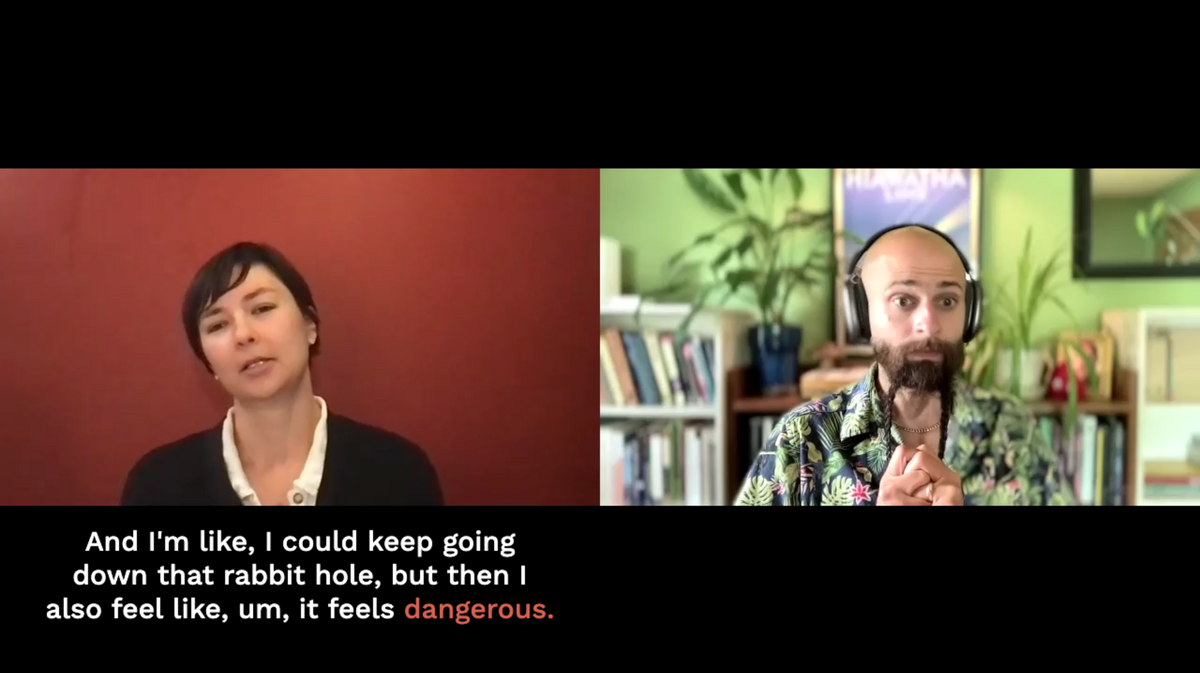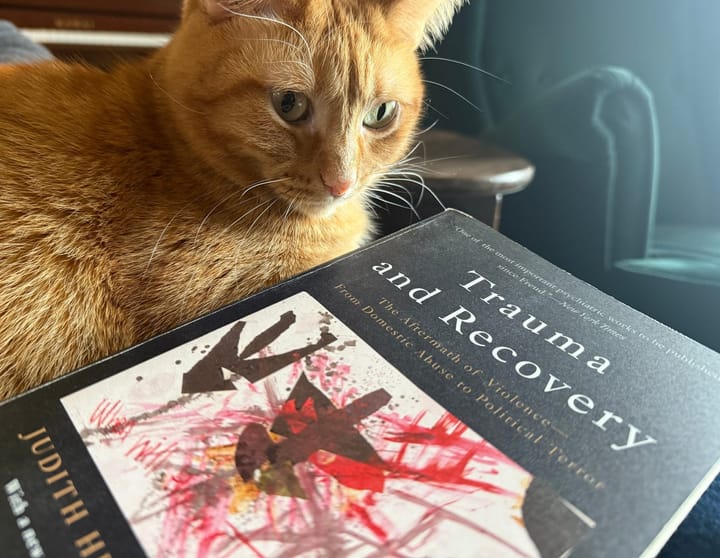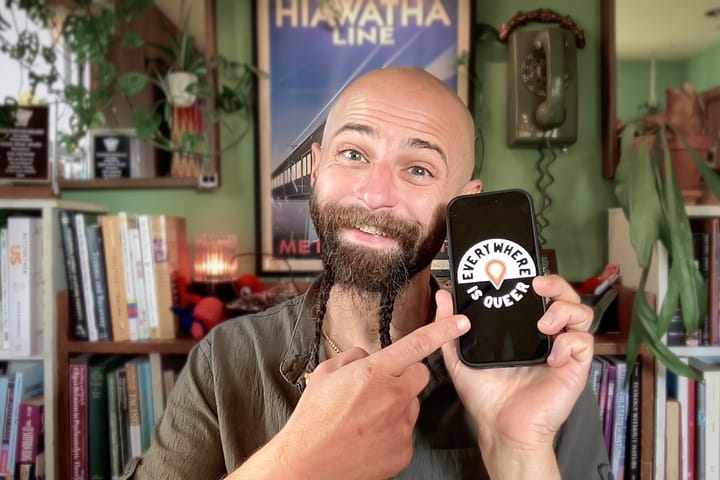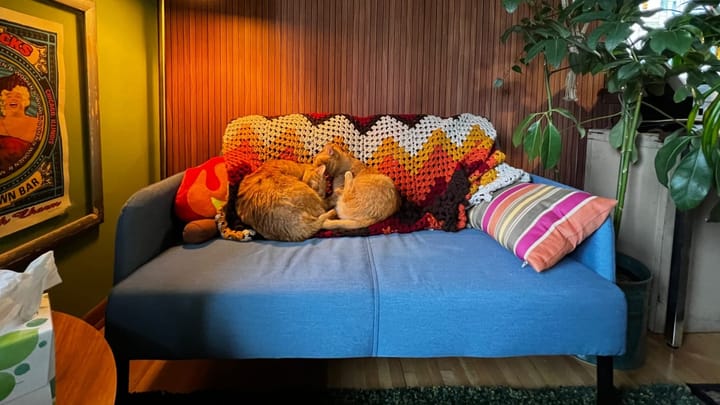Demo session 7: Paying attention to inner wisdom
When we’re trying to heal hurting parts of ourselves, “slow is fast.” If we rush toward our pain too quickly, protective parts of us will redouble their efforts to keep the pain at bay. That’s why we insist on honoring every protective impulse as it appears — just as we do in this clip.

I’ve gone to quite a few traditional therapists over the years, and I’ve always joked that they must make a notch in their desks every time they get a patient to cry. That’s not actually true, of course — I have asked therapists point-blank, and they assure me it’s not — but the feeling behind the joke is both profound and widely shared. From our own experiences with mental healthcare, directly or in cultural representations, we can easily assume that healing only happens on the other side of an intense experience of negative emotion. As one client said to me the other day, in perfect seriousness: “If I’m not a sobbing mess, am I really getting better?”
I know exactly what that client meant, since I asked that question myself when I first started exploring my own inner world. The IFS practitioner I was seeing at the time frustrated me by not quickly homing in on my worst childhood traumas and deepest internal pain. I was impatient to feel better, and I thought I couldn’t possibly feel better without first feeling much, much worse. But my IFS practitioner was in no hurry. “We’ll get there when we get there,” he would say serenely. And we did — much faster, I know now, than we would have if we’d aimed straight for the pain.
As my session with “Michelle” (Alysa Haas) winds down, I invite her to turn her attention inward one last time — and when she does, she moves in a way that gets my attention.
ASH: It seems like — like something just happened.
“MICHELLE”: Yeah. Um, yes. I don’t fully want to tell you. But what I’m going to tell you, is that I’m also noticing I’m feeling sad.
ASH: I get why you might not want to tell me about that. We’re very new to each other. You don’t have to tell me any more about that sad feeling, now or ever, unless you want to.
At a moment like this, parts of me really want to learn more about the sadness! But because I am an IFS practitioner, I gently acknowledge the parts of me who want to aim for the pain — they’re curious, of course, and they want to help “Michelle” feel better — and invite them to let me keep working, which they do.
“MICHELLE”: I was tearing up because when you said that I don’t have to tell you anything more about it, it just felt like relief.
ASH: Yeah. Yeah. The way that this works is based on consent, at every second. So at every moment as we’re working together, you get to decide whether we keep going or not, or back off. You get to decide whether you want to tell me something or keep it private. At every single second, you get to decide.
Insisting on consent in this way reassures every part of “Michelle” that I’m not going to harm her, or make her do anything they aren’t comfortable with. We trust their wisdom; if they think it’s too dangerous to go somewhere, then we won’t. “Michelle” and I will leave this session without learning anything more about the sadness — and that’s exactly as it should be. We’ll get there when we get there.
As our first session comes to a close, “Michelle” and I will turn our attention to the part of coaching where the magic really happens: deciding how she’ll keep in touch with her inner world between now and our next session.
⏮️ Previous | All clips | Next ⏭️



